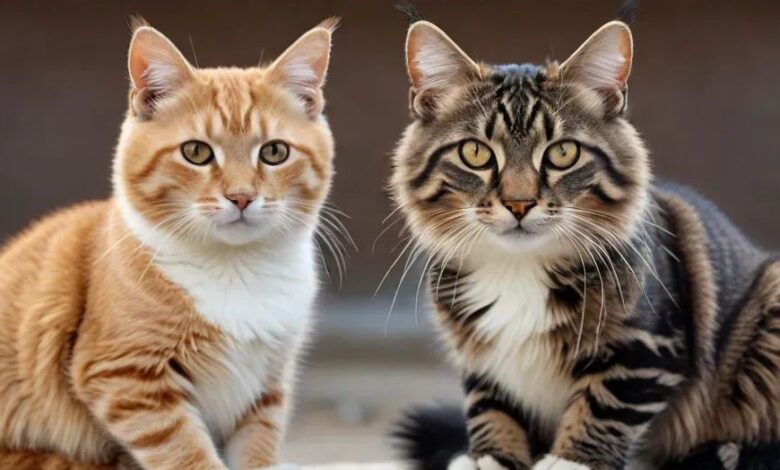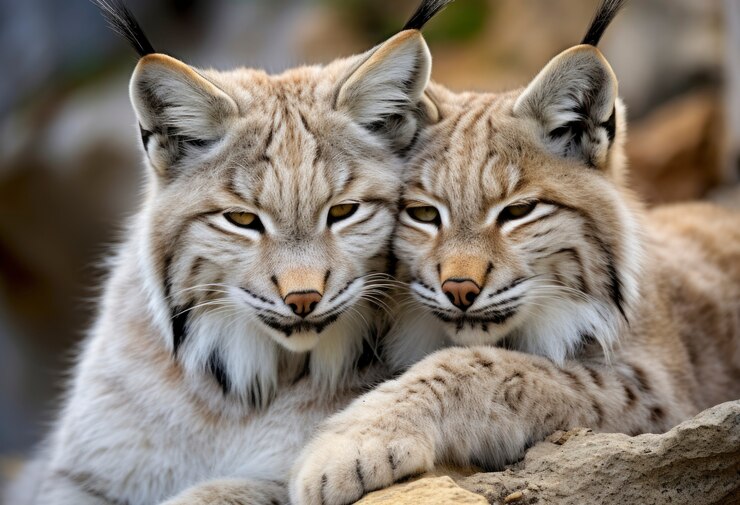The Fascinating World of 2 Zoo Cats Crossbreed: Nature’s Wild Experiment

2 Zoo Cats Crossbreed—sounds like a mysterious and exciting event, doesn’t it? Imagine two wild zoo cats, each from different species, coming together to create something entirely new. This is what we call a crossbreed, and it’s more common in the animal kingdom than we might think. But when zoo cats are involved, the results can be both surprising and interesting to learn about.
In this blog post, we’ll explore the amazing story behind the 2 zoo cats crossbreed. What does it mean for the animals involved? How does it happen? And why are these crossbreeds so special to scientists and animal lovers alike? If you’ve ever been curious about zoo animals and the wonders of genetics, this post is for you!
How Do 2 Zoo Cats Crossbreed in Nature? Understanding the Process
In the wild, 2 zoo cats crossbreed can happen when two different species of wild cats come into contact with each other, usually because of overlapping territories. For instance, lions and tigers are native to different regions but have occasionally been known to cross paths in places like zoos or wildlife reserves where both species are housed.
Crossbreeding generally requires that the animals are of a similar size and have compatible mating behaviors. In the wild, these encounters are rare but do happen when the animals’ territories overlap. When zoo cats are bred in captivity, it is usually a controlled process, where scientists carefully monitor the animals’ health, behavior, and genetic traits.
- Territory Overlap: Lions and tigers, though they live in different habitats, may come together in zoos.
- Size Compatibility: Crossbreeding is more likely when the species are of similar size and health.
- Controlled Environment: Zoos monitor the health of the animals and genetics during crossbreeding.
Even though crossbreeding in zoos is controlled, it’s important to know that it doesn’t always result in successful offspring. It requires the right environment and proper care to ensure both the mother and the offspring are healthy.
Are Crossbreeds Between Zoo Cats Healthy? The Pros and Cons

When it comes to 2 zoo cats crossbreed, the health of the resulting hybrid is a significant concern. Some hybrid cats are perfectly healthy, while others may face health problems because of their mixed genes. One of the major concerns with crossbreeding is that it can lead to genetic defects, especially if the two species are too different from one another.
On the positive side, crossbreeding can sometimes result in stronger animals with traits from both parent species. For example, ligers (lion and tiger crossbreeds) are often larger than either parent and may inherit the strength and hunting abilities of both species.
However, there are also some downsides. Crossbred animals can suffer from inherited health conditions or shortened lifespans. Some hybrids also face challenges in reproducing, which may lead to a decline in the hybrid population over time.
- Genetic Strengths: Hybrids might inherit desirable traits from both parents.
- Health Risks: Some hybrids can suffer from genetic disorders, making them weaker than their purebred counterparts.
It’s important for zoos to carefully consider the health and well-being of the animals involved in crossbreeding programs. In some cases, experts recommend avoiding crossbreeding to preserve the health of the species involved.
The Most Famous Examples of 2 Zoo Cats Crossbreed: Wild Animal Hybrids
2 zoo cats crossbreed have led to some famous and interesting hybrid animals, which have captured the attention of animal lovers around the world. Some of the most well-known hybrids are the liger, the tigon, and the lepjag. These unique creatures are the results of mixing species such as lions, tigers, and leopards.
- Liger: A lion and tiger crossbreed. Ligers are the largest of all big cats, often growing much larger than their parents.
- Tigon: A tiger and lion crossbreed. Tigons are usually smaller than ligers but are still quite large compared to other cats.
- Lepjag: A hybrid between a leopard and a jaguar, often admired for its beautiful coat patterns.
These hybrids have intrigued scientists and animal lovers, but there are concerns about their health and whether crossbreeding is truly beneficial for conservation efforts. While these hybrid animals can be fascinating, they also bring attention to the ethical and environmental issues surrounding crossbreeding.

Why Do Zoos Create Crossbreeds Between Different Cat Species?
Zoos have several reasons for experimenting with 2 zoo cats crossbreed, with one of the main goals being scientific research. By studying these hybrids, zoologists can learn more about genetics, animal behavior, and how species adapt to various environments. Crossbreeding can also help preserve certain traits that might be beneficial in the wild, although this is a topic of ongoing debate among experts.
However, not all crossbreeding is done for research purposes. In some cases, hybrid zoo cats are bred to create attractions that draw more visitors to the zoo. People love seeing these unique animals, which can increase interest and revenue for the zoo. While this can be beneficial for zoos financially, it raises ethical concerns about the well-being of the animals.
Key Reasons for Crossbreeding Zoo Cats:
- Scientific Research: To learn more about genetics and animal behavior.
- Conservation Efforts: Preserving beneficial traits for future generations.
- Attraction for Visitors: Hybrid cats can bring in crowds and boost zoo attendance.
Ethical Considerations: Should Zoos Promote 2 Zoo Cats Crossbreeds?

When it comes to 2 zoo cats crossbreed, there are ethical questions that need to be addressed. Many animal welfare advocates believe that crossbreeding should only be done if it serves a clear purpose, such as preserving endangered species or improving the health of the animals involved. They argue that creating hybrids for entertainment or profit does not justify the potential harm to the animals’ well-being.
Zoos should also ensure that the animals are not suffering from health problems due to their mixed genes. For example, ligers have been known to suffer from issues like joint problems and difficulty reproducing. Some people argue that zoos should focus more on conservation efforts for purebred species, rather than promoting hybrids that might not have a natural place in the wild.
Ethical Issues with Crossbreeding:
- Health Concerns: Hybrids might suffer from genetic problems.
- Welfare of the Animals: Creating hybrids for profit may not be ethical if it harms the animals.
- Conservation Priorities: Should zoos focus on saving endangered species rather than creating hybrids?
Conclusion
The idea of 2 zoo cats crossbreed is both fascinating and complex. While it can lead to some interesting hybrids, like ligers and tigons, there are many factors to consider. These animals might be bigger and stronger, but sometimes they face health problems because of their mixed genes. Zoos need to think carefully about whether crossbreeding is always the best choice for the animals and their well-being.
At the end of the day, the health of the animals should come first. While learning about these hybrids can be exciting, it’s important to remember that purebred species also need protection and care. By understanding the science and ethics behind crossbreeding, we can better appreciate both the beauty of these animals and the responsibility we have to keep them safe.